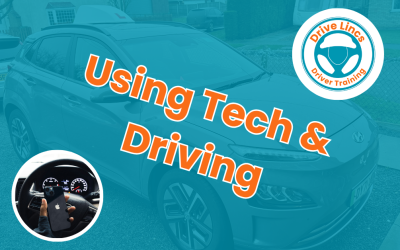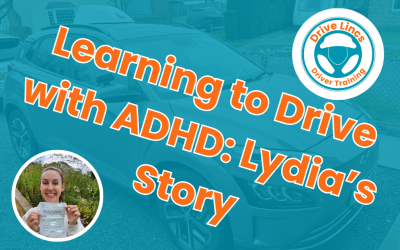Drive Lincs: Navigating the Aging Driver Journey
As we age, driving remains a vital part of maintaining independence, staying connected with loved ones, and accessing essential services. However, the natural aging process can influence driving abilities. By understanding these changes, aging drivers can adapt and continue to drive safely while ensuring the well-being of all road users. Here’s a detailed look at how aging affects driving and strategies to address these changes.
The Effects of Aging on Driving
Aging doesn’t automatically mean giving up driving; rather, it’s about ensuring fitness to drive. Specific changes that aging drivers might experience include:
Vision Decline
- Reduced Visual Clarity: Difficulty distinguishing objects and reading signs.
- Slower Glare Recovery: Taking longer to adjust between bright and dim lighting, such as moving from sunlight into tunnels.
- Narrower Field of Vision: A decrease in peripheral awareness, leading to increased blind spots.
- Depth and Contrast Challenges: Struggles with judging distances and differentiating colors, affecting hazard detection.
Cognitive Changes
- Slower Reaction Times: Reduced speed in responding to sudden situations.
- Multitasking Difficulties: Challenges in managing navigation and in-car distractions simultaneously.
- Hazard Perception Decline: Less effective at identifying and reacting to risks, such as erratic driving or sudden stops.
Physical Limitations
- Reduced Flexibility: Difficulty turning to check blind spots or adjusting mirrors.
- Decreased Strength and Endurance: Faster fatigue and challenges with vehicle control.
- Pain or Stiffness: Physical discomfort affecting steering, braking, or acceleration.
Common Challenges for Aging Drivers
While aging drivers generally have lower overall crash rates, they face distinct risks:
Junction Collisions
- Difficulty judging the speed and distance of oncoming traffic.
- Complex intersections posing greater challenges for visual scanning and decision-making.
Increased Injury Severity
- Aging drivers are more susceptible to serious injuries due to increased frailty.
Selective Driving Habits
- Many older drivers self-regulate by avoiding challenging conditions, such as night driving, heavy traffic, or adverse weather.
Strategies for Safe Driving
Aging drivers can maintain their skills and adapt effectively through proactive measures:
Managing Vision Changes
- Schedule regular eye exams and update prescriptions as needed.
- Use anti-glare or polarized lenses to manage bright light.
- Keep windshields and mirrors clean for optimal visibility.
- Consider vehicle features like blind-spot detection or reversing cameras.
Enhancing Cognitive Skills
- Practice hazard perception with video-based training tools.
- Plan shorter trips to reduce mental fatigue.
- Minimize distractions by avoiding mobile phones and loud in-car environments.
Improving Physical Comfort
- Engage in exercises to maintain flexibility and mobility, focusing on neck and shoulder movement.
- Adjust vehicle seating for proper posture and support.
- Opt for cars with ergonomic features, such as automatic transmission and power steering.
Effective Journey Planning
- Choose routes with simpler navigation and fewer high-speed junctions.
- Drive during daylight hours and favorable weather conditions.
- Allow extra travel time to avoid feeling rushed.
- Plan breaks during longer trips to reduce fatigue.
Preparing for Driving Retirement
Driving retirement is an eventual reality for many. Preparing early can make this transition smoother and less daunting:
Exploring Alternatives
- Familiarize yourself with public transportation options and schedules.
- Identify trusted taxi services or community transport schemes.
- Use ride-sharing platforms for occasional trips.
Reducing Dependency
- Begin identifying non-essential trips that can be completed on foot or via other means.
- Coordinate weekly activities around accessible transport options.
Maintaining Social Connections
- Stay involved in community groups or social activities to reduce isolation.
- Seek opportunities to travel with friends or family members.
Encouraging Self-Awareness
Self-reflection is key to understanding driving abilities and making informed adjustments. Drivers can:
- Keep a Driving Log: Document instances of uncertainty or near-misses to identify patterns.
- Seek Feedback: Ask passengers or participate in professional assessments for objective insights.
- Recognize “Ooh Moments:” Pay attention to startling situations or close calls, using them as opportunities for improvement.
The Role of Family and Community
Supporting aging drivers extends beyond individual efforts. Families, friends, and communities can:
- Encourage regular health checkups and driving assessments.
- Assist with planning journeys or accessing alternative transportation.
- Promote awareness of resources like local mobility centers or driver refresher programs.
Conclusion
Aging is a natural process that doesn’t have to end a driver’s independence. By understanding and adapting to the changes associated with age, drivers can continue to enjoy the freedom of the road while prioritizing safety. With proactive strategies and community support, aging drivers can remain confident, capable, and prepared for the future.




